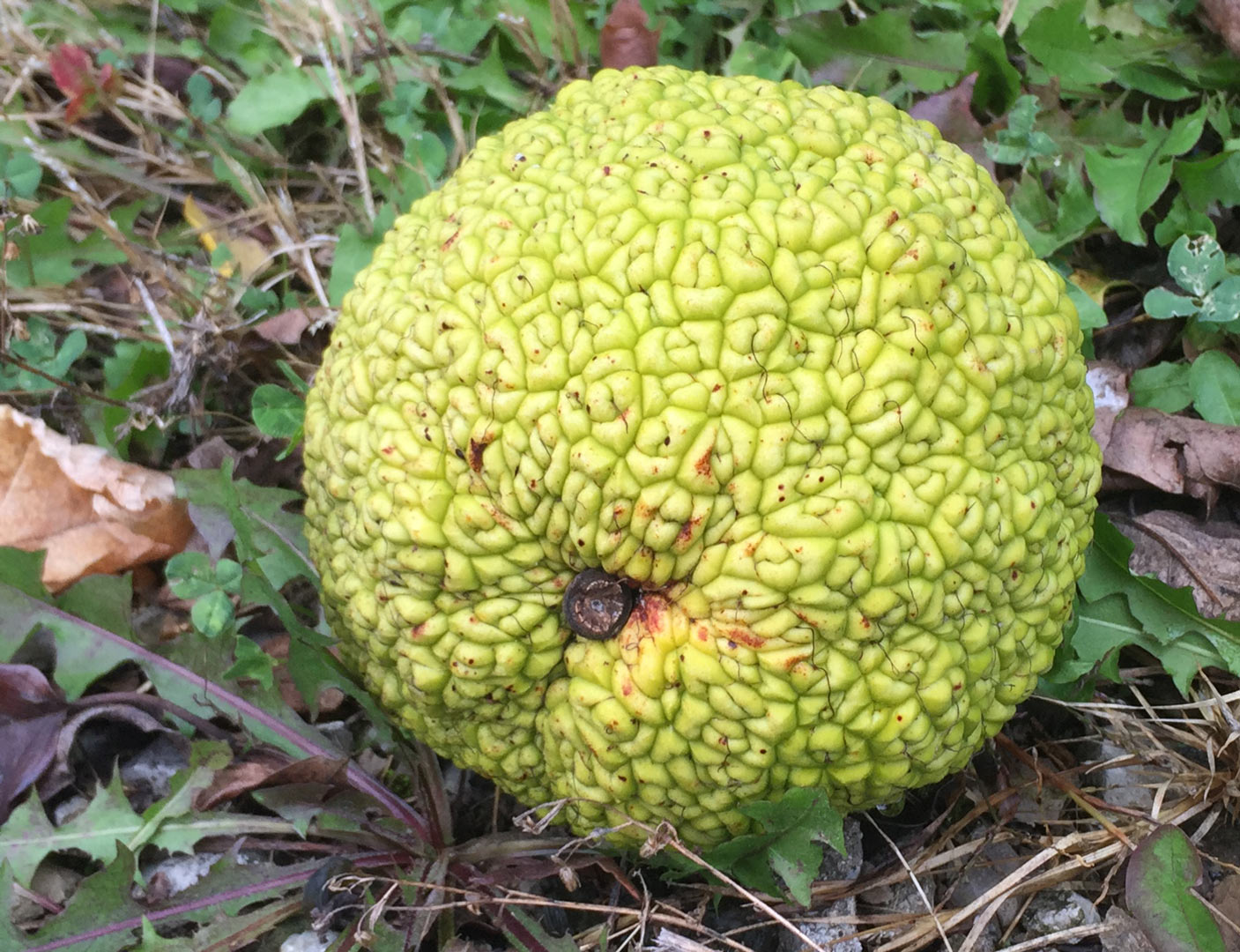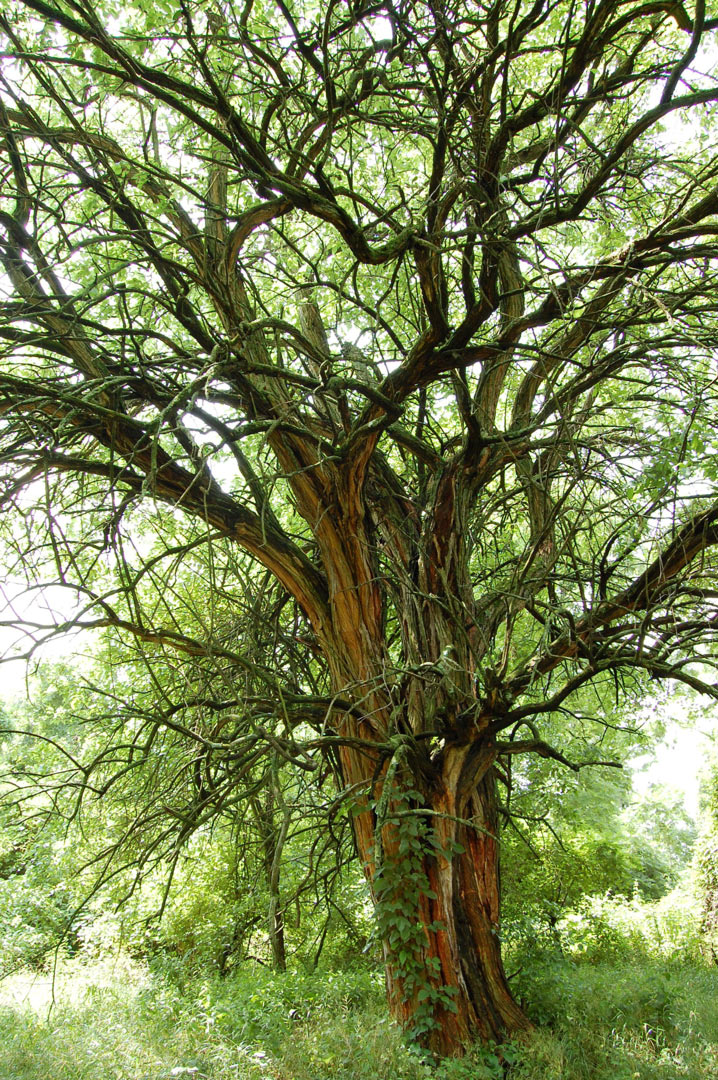ANDREA KRAVA, Naturalist Blendon Woods

Osage orange trees aren’t native to Ohio, but they arrived here in large numbers in the 1800s, mostly brought by settlers. They grow thick trunks with thorny branches, perfect for forming a natural fence around early farms and properties. My husband knows the thorns well, as they poke and scratch at him while mowing the lawn at our 1.5-acre property that used to be at the end of a half-mile-long farm in the early 1900s. These trees were also very effective in providing a windbreak on early farms, and their roots kept soil in place.
Slate Run Metro Park has one of the largest Osage orange trees in Ohio, on the Bobolink Trail, next to the deck that overlooks the wetland. The wood of an Osage orange tree is stronger than oak and makes for great fence posts, tool handles and much more. The wood also resists rotting, making the trees quite long-lived. They can grow to over 40-feet high.

We have lots of Osage orange trees along the north and west sides of our house. The fruits come from the female trees and begin falling to the ground as early as September. Because of their size and heft, the fruits make quite a disturbance on their way through the maze of branches and leaves. They will gradually turn from chartreuse green to a drab brown after they fall. We sometimes collect them to give to our relatives, who believe they repel spiders in their basements or attics.
We’ve never seen any animals eat the Osage orange fruits. Most animals don’t want to battle with the sticky, milky sap found in the fruits and branches (think of the “milk” that comes from milkweed plants, but yellow-green instead of white). However, I’ve read that squirrels have been seen trying to dig in to the fruits, so there must be something tasty inside.
Since so few animals eat the fruit, and there is no commercial use for it, they just rot on the ground, spreading their seeds for more Osage orange trees to grow.
The trees got their name from the Osage Indians. The fruit is about the size of an orange, although I’ve seen many that are bigger than grapefruits. The hedge apple nickname comes from the fact that the trees were usually planted in a row like a fence or hedge, and they look somewhat like an apple. Some people call the fruits monkey brains, as the fruit’s texture looks like the squiggles in a brain.
Check out Slate Run and other Metro Parks to look for these beautiful trees and their fruit over the next few weeks. You should still be able to see the fruits until the first snows, when they quickly decompose.
